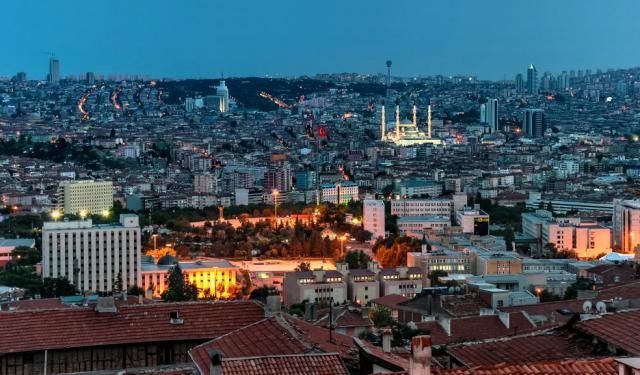
Ankara Roman Theater, Ankara
The Ankara Roman Theater, situated in the Ulus district of Altındağ in Ankara, is an ancient structure whose exact construction date remains unknown. However, it is believed to have been built in the 2nd century AD.
The theater was discovered during excavations carried out between 1982 and 1986, led by the Museum of Anatolian Civilizations. The excavations uncovered various components of the theater, including vaulted parados buildings, upholstered orchestra, audience seats, stage sections, and walls. As a result of the findings, the building was designated as the 1st and 2nd nature-protected area on February 25, 1992.
Subsequently, between 2009 and 2010, further excavations were conducted, and the Ankara Metropolitan Municipality took over the site. The restoration project involved creating a three-dimensional model of the theater in its original state, and a decision was made to fully renovate the cave portion. However, some experts criticized the use of white marble to cover the seating section, as the original construction used Ankara stone.
The theater was discovered during excavations carried out between 1982 and 1986, led by the Museum of Anatolian Civilizations. The excavations uncovered various components of the theater, including vaulted parados buildings, upholstered orchestra, audience seats, stage sections, and walls. As a result of the findings, the building was designated as the 1st and 2nd nature-protected area on February 25, 1992.
Subsequently, between 2009 and 2010, further excavations were conducted, and the Ankara Metropolitan Municipality took over the site. The restoration project involved creating a three-dimensional model of the theater in its original state, and a decision was made to fully renovate the cave portion. However, some experts criticized the use of white marble to cover the seating section, as the original construction used Ankara stone.
Want to visit this sight? Check out these Self-Guided Walking Tours in Ankara. Alternatively, you can download the mobile app "GPSmyCity: Walks in 1K+ Cities" from Apple App Store or Google Play Store. The app turns your mobile device to a personal tour guide and it works offline, so no data plan is needed when traveling abroad.
Ankara Roman Theater on Map
Sight Name: Ankara Roman Theater
Sight Location: Ankara, Turkey (See walking tours in Ankara)
Sight Type: Attraction/Landmark
Guide(s) Containing This Sight:
Sight Location: Ankara, Turkey (See walking tours in Ankara)
Sight Type: Attraction/Landmark
Guide(s) Containing This Sight:
Walking Tours in Ankara, Turkey
Create Your Own Walk in Ankara
Creating your own self-guided walk in Ankara is easy and fun. Choose the city attractions that you want to see and a walk route map will be created just for you. You can even set your hotel as the start point of the walk.
Ankara Roman Ruins Walking Tour
In 25 BC, Emperor Augustus annexed Ankara, then known as Ancyra, to the Roman Empire. Following that, the city, attached with considerable importance, was enhanced with fortifications and embellished with temples and elaborate civic buildings.
The most significant Roman landmarks, a testament to the Roman imperial cultural influence, survived to our days albeit ruined, include the Roman Theater... view more
Tour Duration: 1 Hour(s)
Travel Distance: 1.4 Km or 0.9 Miles
The most significant Roman landmarks, a testament to the Roman imperial cultural influence, survived to our days albeit ruined, include the Roman Theater... view more
Tour Duration: 1 Hour(s)
Travel Distance: 1.4 Km or 0.9 Miles
Ankara Introduction Walking Tour
Ankara, the capital of modern Turkey, is the heart of the country's central region of Anatolia. Apart from being an important center for politics, this cosmopolitan city – the second-largest in Turkey after Istanbul – plays a significant role in shaping the nation's cultural and economic landscape.
Ankara has a long and eventful history, dating back to the Bronze Age, circa 2,000... view more
Tour Duration: 1 Hour(s)
Travel Distance: 2.6 Km or 1.6 Miles
Ankara has a long and eventful history, dating back to the Bronze Age, circa 2,000... view more
Tour Duration: 1 Hour(s)
Travel Distance: 2.6 Km or 1.6 Miles


